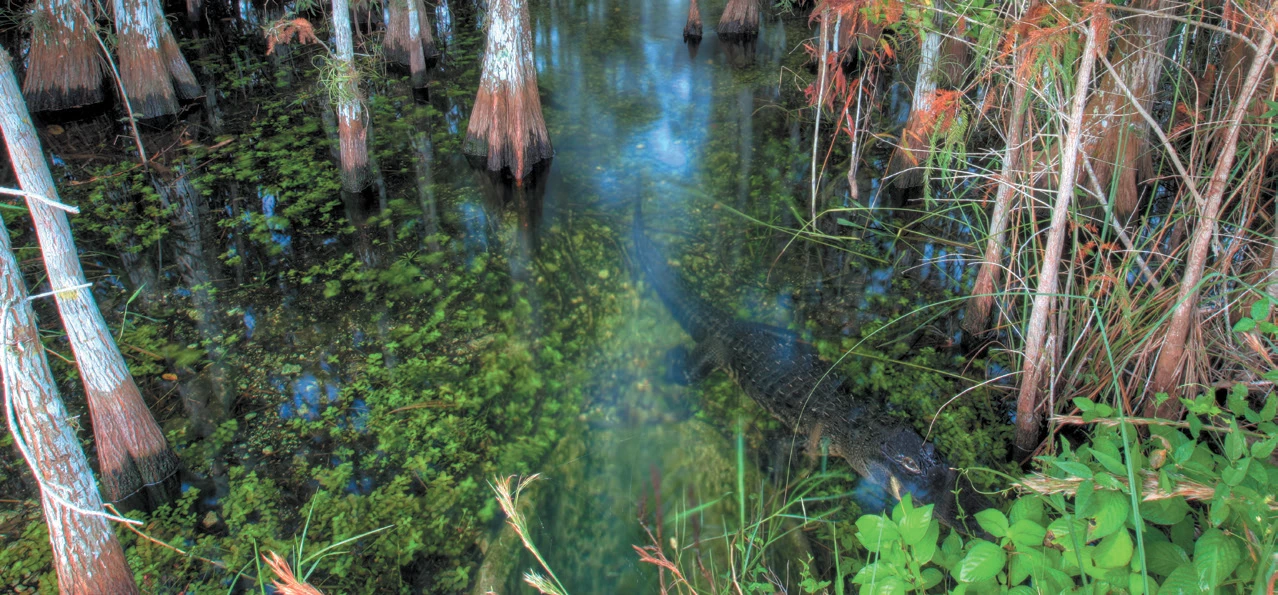Last updated: April 21, 2025
Article
Science Plan in Support of Ecosystem Restoration, Preservation, and Protection in South Florida

NPS
The Florida Everglades is a complex ecosystem of diverse, interconnected subtropical habitats. Once comprised of over 4 million acres, today the historic Everglades have been reduced by half. The conflict of human versus natural elements in South Florida began in earnest in the early 1900s, when the control of water and the drainage of wetlands were first considered essential for commerce and human safety. Loss of life due to hurricane-related flooding in the 1920s accelerated drainage projects, culminating in the congressional authorization of the Central and Southern Florida (C&SF) Flood Control Project in 1948.
Over the course of the next 50 years, exponential population growth, urbanization, and agricultural practices significantly altered the South Florida ecosystem. Implementation of the C&SF Project hydrologically fragmented the Everglades, resulting in unnatural quantities and timing of freshwater flows to and through the remaining natural areas. These hydrologic changes resulted in severe ecosystem degradation, evidenced by a 90% decline in wading bird populations, declines in commercial and recreational fisheries, significant decreases in the number of Everglades tree islands, and widespread invasions of exotic plants and animals. Currently 68 species in the Greater Everglades are federally listed as threatened or endangered.
p>During the past two decades, the Florida Legislature and the U.S. Congress have enacted a series of laws to redress environmental harm to the South Florida ecosystem. To support ongoing South Florida restoration efforts, the U.S. Department of the Interior and its bureaus, the U.S. Fish and Wildlife Service, the National Park Service, and the U.S. Geological Survey, developed this science plan to identify the science needed to support DOI managers in fulfilling their stewardship responsibilities for natural resources in South Florida.
Overall, DOI science will assist in the intergovernmental effort to answer three overarching restoration questions: What actions will improve the quantity, timing, and distribution of clean, fresh water needed to restore the South Florida ecosystem? What actions will restore, protect, and maintain natural resources on DOI lands in South Florida? What actions will recover South Florida's threatened and endangered species?
Success in addressing these three overarching questions at ecological scales ranging from individual species and communities, to individual parks and refuges, to the entire South Florida ecosystem will require a well-coordinated, collaborative, and integrated effort among participating agencies and stakeholders. None of these questions can be answered independently by any one agency or partner. Science must be synthesized and disseminated among the wide range of agencies and partners involved in this effort. Moreover, each of these questions raises more specific questions about the interrelated variables affecting the condition of the ecosystem, including hydropatterns (the quantity, timing, and distribution of water), water quality, ecological responses of biological communities and species to changes in water quantity and quality, the role of fire, the effects of invasive exotic species, the effects of adjacent land uses on natural areas, and the effects of public use of parks and refuges. The major unanswered questions associated with particular projects are identified in this report and serve as the focal points for discussing what is known and what additional scientific information is needed to help ensure that each project produces the intended performance within the ecosystem.
(from the Executive Summary, 2005, U.S. Dept. of Interior)
